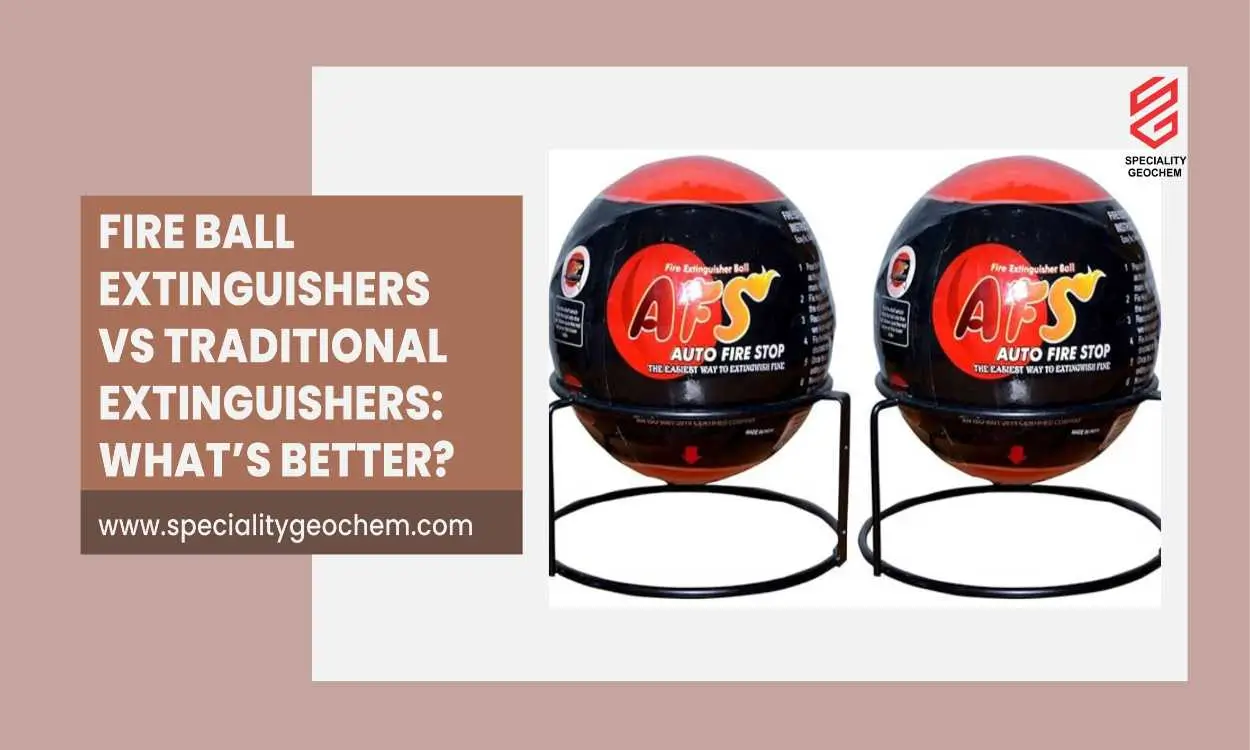Fire Ball Extinguishers vs Traditional: Fire safety is non-negotiable when it comes to protecting lives and property. From homes and offices to factories and vehicles, having the right fire extinguishing equipment can mean the difference between a minor incident and a major disaster. While traditional fire extinguishers have been the standard for decades, the rise of fire ball extinguishers introduces a new, innovative approach to fire control.
In this blog, we explore Fire Ball Extinguishers vs Traditional Extinguishers, comparing features, effectiveness, usability, and safety to help you decide which one is better suited for your needs.
What Are Fire Ball Extinguishers?
A Modern Solution to Fire Safety
Fire ball extinguishers, also known as automatic fire extinguishing balls, are lightweight, spherical devices filled with dry chemical powder (typically mono ammonium phosphate). When exposed to flame for a few seconds, they automatically burst and disperse the extinguishing agent in all directions—suppressing the fire quickly.
They are commonly installed in high-risk areas like electrical panels, kitchens, vehicles, and factories where fires can break out suddenly and without notice.
What Are Traditional Fire Extinguishers?
The Conventional Firefighting Tool
Traditional fire extinguishers are handheld metal cylinders that discharge different fire-suppressant agents—like water, CO₂, foam, or dry powder—through a hose or nozzle when manually activated. They are classified by the type of fire they are meant to combat (Class A, B, C, etc.), and their effectiveness depends largely on human operation and timely access.
Traditional extinguishers are widely used in residential buildings, offices, warehouses, public spaces, and vehicles.
Key Differences Between Fire Ball Extinguishers Vs Traditional Extinguishers
Let’s take a closer look at how these two fire-fighting tools compare in terms of various parameters:
1. Activation Method
Fire Ball Extinguishers:
- Automatically activate within 3–5 seconds upon contact with fire.
- No human intervention needed.
- Can also be manually thrown into fire.
Traditional Extinguishers:
- Require manual operation by pulling a pin and aiming at the base of the fire.
- Need training and quick decision-making during panic situations.
✅ Verdict: Fire balls win in terms of ease and automation.
2. Ease of Use
Fire Ball Extinguishers:
- Can be used by anyone—no training required.
- Passive device that activates on its own.
Traditional Extinguishers:
- Require knowledge of PASS technique (Pull, Aim, Squeeze, Sweep).
- Can be difficult to use under pressure or in emergencies.
✅ Verdict: Fire ball extinguishers offer superior user-friendliness.
3. Coverage and Efficiency
Fire Ball Extinguishers:
- Covers a radius of 1.3 to 2.5 meters depending on the brand and model.
- Ideal for small-to-medium fires.
Traditional Extinguishers:
- Larger extinguishers have more agent volume.
- Better suited for bigger fires and can target flames directly.
✅ Verdict: Traditional extinguishers have an edge in large-scale fire situations.
4. Installation and Maintenance
Fire Ball Extinguishers:
- Wall-mounted or placed in strategic areas.
- No regular maintenance required.
- Lifespan of 5 years without refilling.
Traditional Extinguishers:
- Need annual inspection and periodic refilling.
- Must be easily accessible, which requires proper placement and checks.
✅ Verdict: Fire balls require less maintenance and are easier to manage.
5. Cost and Replacement
Fire Ball Extinguishers:
- Generally cost-effective in the long run due to zero maintenance.
- One-time use device.
Traditional Extinguishers:
- Higher initial investment plus annual servicing costs.
- Can be reused after recharging.
✅ Verdict: Fire balls are affordable and maintenance-free, but traditional extinguishers are reusable.
6. Suitability for Fire Types
Fire Ball Extinguishers:
- Most are suitable for Class A, B, and C fires.
- Not effective for oil fires in confined pans or metal fires.
Traditional Extinguishers:
- Available in multiple variants for all fire classes (ABC, CO₂, D, K types).
- Can be chosen based on the specific fire risk.
✅ Verdict: Traditional extinguishers offer broader fire-class coverage.
Use Cases: When to Choose Which?
Fire Ball Extinguishers Are Ideal For:
- Electrical cabinets and server rooms
- Kitchens and storage rooms
- Elderly care homes or unattended areas
- Fire-prone zones in factories or warehouses
Traditional Extinguishers Are Ideal For:
- Large industrial units
- Multi-story buildings
- Schools, offices, hospitals
- Fire brigade backup
- General public places with trained staff
Pros and Cons Summary
| Feature | Fire Ball Extinguisher | Traditional Extinguisher |
| Activation | Automatic | Manual |
| Usability | Easy | Requires training |
| Coverage | 360° burst, small radius | Targeted spraying, wider area |
| Maintenance | None | Regular inspection needed |
| Cost | Low, single-use | High, reusable with servicing |
| Versatility | Limited to ABC fires | Available for all fire types |
| Lifespan | 5 years | Varies with usage and refill |
Conclusion: Fire Ball Extinguishers vs Traditional Extinguishers — What’s Better?
At Speciality Geochem, we believe that fire safety should be proactive, reliable, and easy for everyone. Our advanced Fire Ball Extinguishers are engineered for instant response and effortless use—perfect for homes, offices, factories, vehicles, and high-risk zones. While traditional fire extinguishers remain essential for trained manual intervention, integrating both solutions ensures comprehensive fire protection.
Whether you’re safeguarding a single space or an entire facility, trust Speciality Geochem—a leading fire extinguisher ball manufacturer in India—to deliver high-quality, certified fire safety products designed to protect lives, property, and peace of mind.

